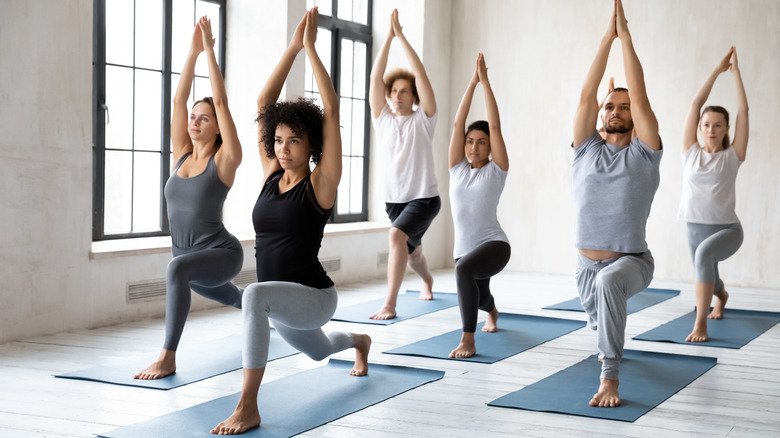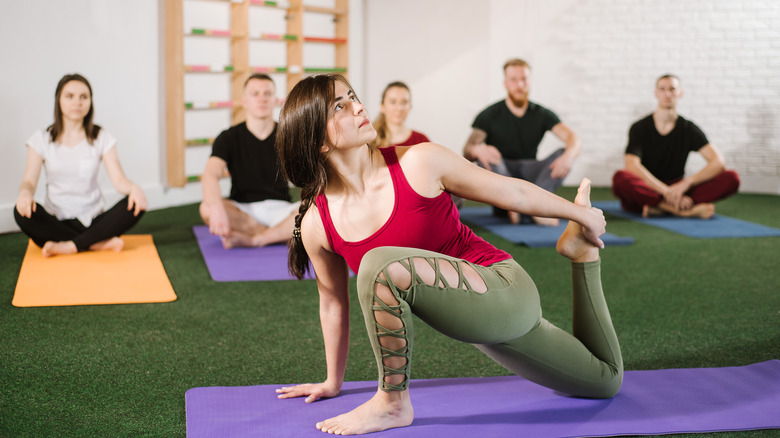What Is Joga And How Is It Different Than Yoga?
Most of us are very familiar with the practice of yoga. When you hear the word, images of downward-facing dogs, sun salutations, and child's poses fill your head. If you've ever been to a yoga class, you know how challenging the positions can be when held for long periods of time. Many fitness enthusiasts are also aware that the breath work and meditative nature of yoga offer benefits that transcend the body.
However, many athletes who take part in explosive movements in their preferred method of exercise do not feel that yoga is the best workout for them. Many complain that the ancient language is confusing, the positions often require too much flexibility for their tight muscles, and they may try to do too much too soon in their yoga practice. This is where the need for a workout like Joga enters into the exercise scene.
Joga is a relatively new yoga hack for competitive athletes who are already working out at a high level. Although any person can try it, it is tailored toward athletes, making it an exciting new fitness trend in the health and wellness industry. Joga has similarities to the practice of yoga, but there are key differences as well.
How yoga and Joga differ
Created by Jana Webb over a decade ago, Joga differs in how it serves the person taking part in the exercise, per Joga World. According to the official website, it "is a three dimensional movement system that hybrids the science of yoga with the biomechanics of sports movement." Yoga focuses on holding poses for a long period of time while incorporating breathing and meditation. Many athletes have a hard time with this form of practice due to the difficulty of static stretching on an athletic body. Webb noticed that there was a need for a restorative exercise with considerations for the body and mind of a competitive athlete, which brought out Joga.
Because Joga was created for the competitive athlete, it incorporates more strength and conditioning in the practice and it also includes dynamic movements that mirror the movements athletes do in their specific sports. While Joga activates the same nervous system and requires a marriage of movement and breath, Joga is a modernization of the practice promoting stability and mobility.
What Joga offers
Although Joga is known as "yoga for jocks," it is a workout that can benefit any body. The benefits are similar to that of yoga due to the combining of breath and stretching, but it really works to fix any muscular imbalances. In addition to helping athletes find balance, it can be a great alternative to a rigorous workout when athletes are injured because it's easy on the joints. Unlike yoga, it allows athletes to work in their specific range of motion rather than pushing them beyond the point of comfort. Many athletes lack the flexibility that yoga requires (via Mobile Fitness and Pilates). Being competitors, they often push themselves too far in yoga classes. Joga, however, allows them to do the muscle and breath work dynamically instead of in static motions.
If you are an athlete who has tried yoga and simply didn't feel the benefits promised by the practice, you may want to try Joga instead. You'll still take part in the postures of yoga and the breathing techniques that help you to recover and heal from any injury you may have suffered. It also works to prevent injury. Athletes should feel comfortable knowing that Joga instructors understand the athletic body and mind.
Additionally, there is quite a bit of pressure and anxiety that accompanies performing at a high level (via Martinson Health and Athletics). Joga serves to offer a place of deep relaxation in a challenging atmosphere.


